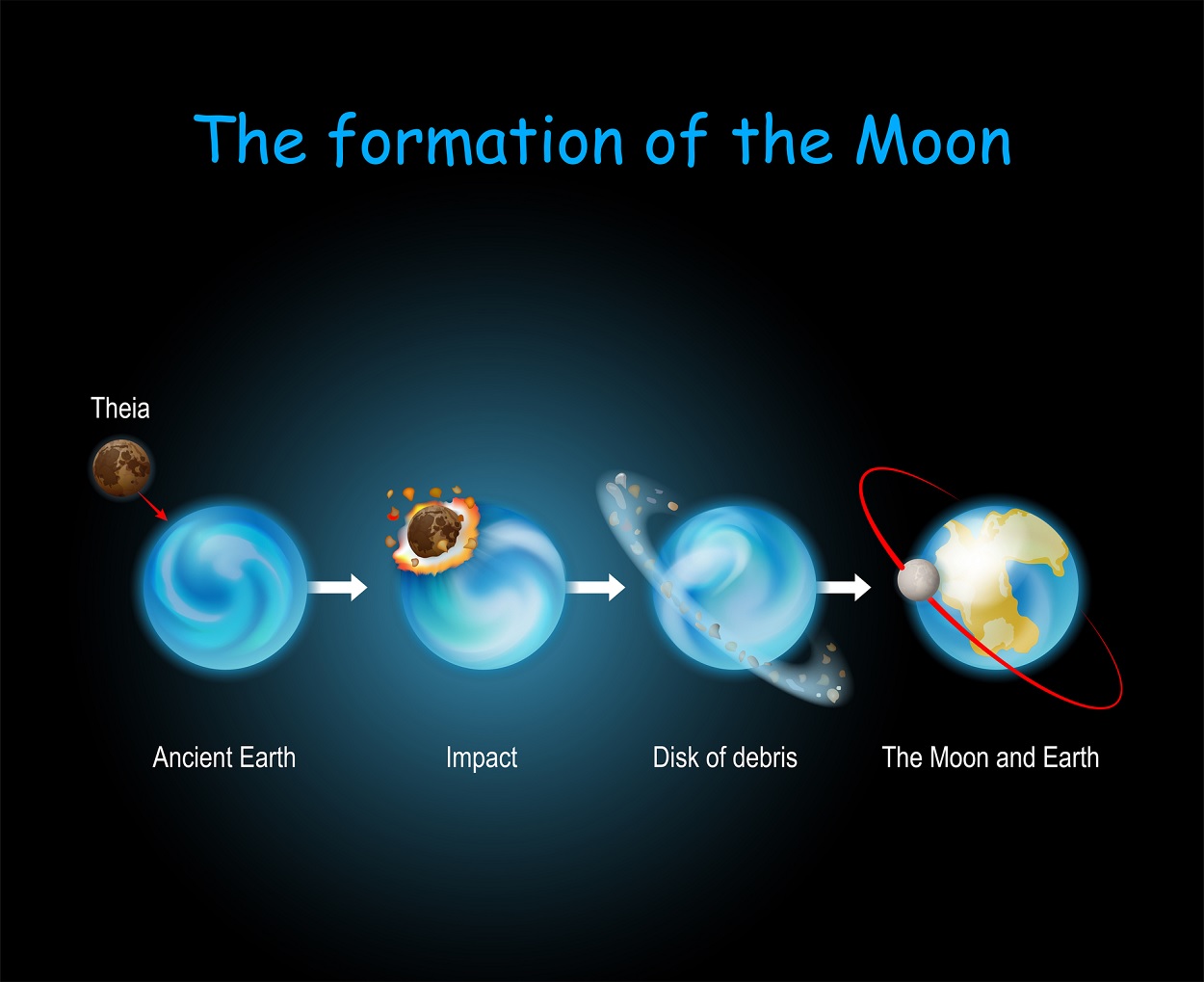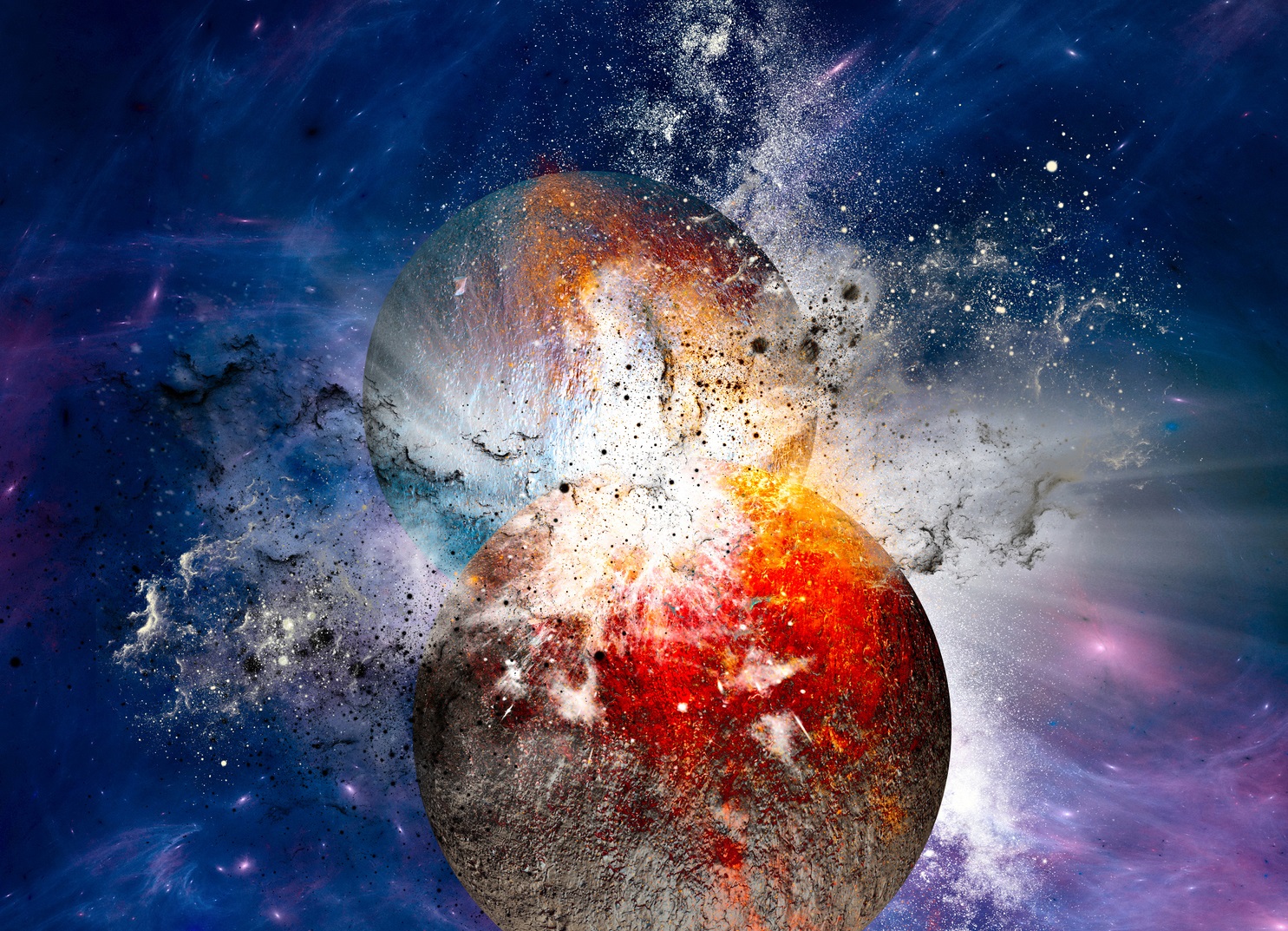Throughout recorded history, the moon’s origins have captivated humanity, with ancient cultures and civilisations viewing it as a deity or a celestial creation of the gods.
Modern science proposes that the Moon formed from a colossal collision between Earth and Theia, a hypothesised ancient planet in the early Solar System.
In Greek mythology, Theia was a Titan and the sister of Hyperion. She was also the mother of Selene, the goddess of the Moon—a story that mirrors the role of the planet Theia in the Moon’s formation.
According to the giant impact hypothesis (also known as the Theia Impact), Theia’s iron core merged with the young Earth, while most of its mantle accreted onto Earth’s mantle. The collision ejected a mixture of material from both planets, forming a debris disc that eventually formed into the Moon.

In a recent study published in the journal PNAS, scientists analysed moon rocks retrieved during the Apollo program, a series of human spaceflight missions led by NASA in the late 1960’s and early 1970’s.
The study found a mineral-rich layer in the moon rocks known as KREEP, which formed as the moon’s molten ocean of magma cooled and solidified. By measuring the radioactive decay of lutetium into hafnium, they calculated the moon’s cooling at around 4.43 billion years ago. Since previous studies estimate it took about 20 million years to cool, this suggests that the moon’s final formation occurred 4.45 billion years ago.
Nicolas Dauphas, the first author on the paper, who heads the UChicago Origins Laboratory and is a professor in the Department of the Geophysical Sciences and the Enrico Fermi Institute, said: “This finding aligns nicely with other evidence—it’s a great place to be in as we prepare for more knowledge about the moon from the Chang-e and Artemis missions. We have a number of other questions that are waiting to be answered.”
Header Image Credit : iStock
Sources : PNAS – https://doi.org/10.1073/pnas.2413802121





